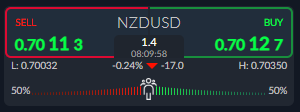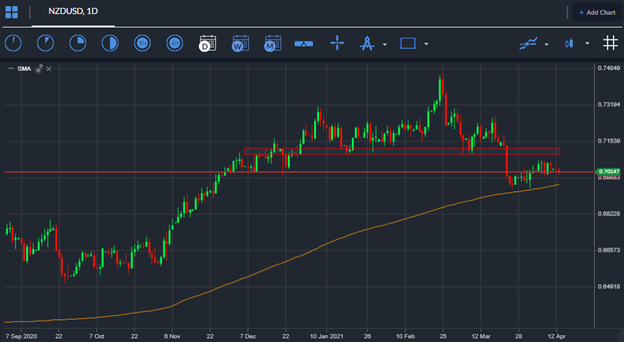The Reserve Bank of New Zealand are expected to keep interest rates unchanged at a record low 0.25 percent this week, with most economists expecting the central bank to talk down the ongoing economic recovery inside the New Zealand economy.
RBNZ Central Bank Governor Orr and the policy board are also tipped to keep large scale asset purchases in place on Wednesday, at NZD $100 billion, and keep the Funding for Lending Programme unchanged.
Market participants will be looking communication from RBNZ Governor Orr and his longer-term interest rate expectation this week. This comes at a time with 10-year bond yields have jumped since the previous policy meeting, both at home, and abroad.
Investors will be acutely aware that the New Zealand economy is still months away from opening its borders, while other countries, such as the US and the UK, are way ahead of New Zealand in terms of vaccination rollout and herd immunity. This could weight on the New Zealand currency in the short-term.
For all intents and purposes, the RBNZ will want to avoid tightening monetary policy conditions too quickly, as the economy is still not firing on all cylinders. The large drop in GDP before the close of last year further highlights the vulnerability of the New Zealand economy.
Leading antipodean bank, ANZ, has come out with its predictions, and are also expecting a dovish tilt with plenty of focus on the recent tax hike on houses, which is expected to be a hot potato for the central bank.
ANZ noted “We expect no change in monetary policy settings at the upcoming review with the OCR to be held at 0.25% for the foreseeable future. A softer than expected starting point for the New Zealand economy will be balanced against a rapidly improving global outlook”.
The bank also elaborated that “The Government’s housing policy announcement last month will only have a moderate impact on the RBNZ’s house price forecasts, which were already on the conservative side. The RBNZ is already braced for a near-term spike in inflation. However, this is expected to be temporary, and the RBNZ will reiterate that a sustained return to its inflation and employment goals is a considerable time away”.
Looking at the ActivTrades market sentiment tool, traders are currently unsure about the NZDUSD pair. This is highlighted by the 50 percent equal split in sentiment, which is usually indicative on sideways trading conditions or consolidation.
See real-time quotes provided by our partner.
From a technical perspective the NZDUSD pair is under pressure and is testing towards its key 200-day moving average for the first-time in nearly one year. A bearish head and shoulders pattern is also visible, so the medium-term technical outlook for the NZDUSD pair is starting to appear somewhat challenged.






